Louisiana Waterthrush
Parkesia motacilla
Parkesia motacilla
| Early Spring Date: | March 11 |
| Late Spring Date: | May 20 |
| Best Dates to See in Spring: | April 7-19 |
| Early Spring Date: | April 22 |
| Late Spring Date: | May 29 |
| Best Dates to See in Spring: | April 29 - May 16 |
Spring: Louisiana Waterthrushes are one of the earliest arriving migrant warblers at Monticello Park. The best time to look for them is during the second week in April. They nest in the Washington metro area, but not at Monticello. Their preferred nesting sites are near fast-running streams in deciduous forests. Northern Waterthrushes show up later. Your best chance to see one at Monticello is during the second week in May. Their preferred nesting habitat is near slow-moving streams in denser habitat. They nest in Canada, the northern United States, and the Appalachian Mountains.
Fall: In most years, only one or two Louisiana Waterthrushes are seen at Monticello during fall migration. About ten Northern Waterthrushes pass through Monticello each fall, and they can show up at any time between the beginning of August and early October.
There are never a lot of waterthrushes in the park at any time, but when they are present, they are not difficult to find. They usually forage in the stream and often stay in a particular portion of the stream. They are territorial and sometimes chase other waterthrushes. Usually, the Louisiana Waterthrushes have passed through before the Northern Waterthrushes arrive, but on occasion, both are in the park at the same time.
Louisiana and Northern Waterthrushes are not easy to tell apart if you do not hear them sing. They forage in sections of the stream where the light is not good, so differentiating subtle fieldmarks can be difficult. Both are large warblers with solid brown backs and no wingbars. They have a supercilium (eyebrow) and long legs, and both bob when feeding. For each species, the sexes look alike, there is no difference between spring and fall birds, and there is no difference between adults and first-year birds.
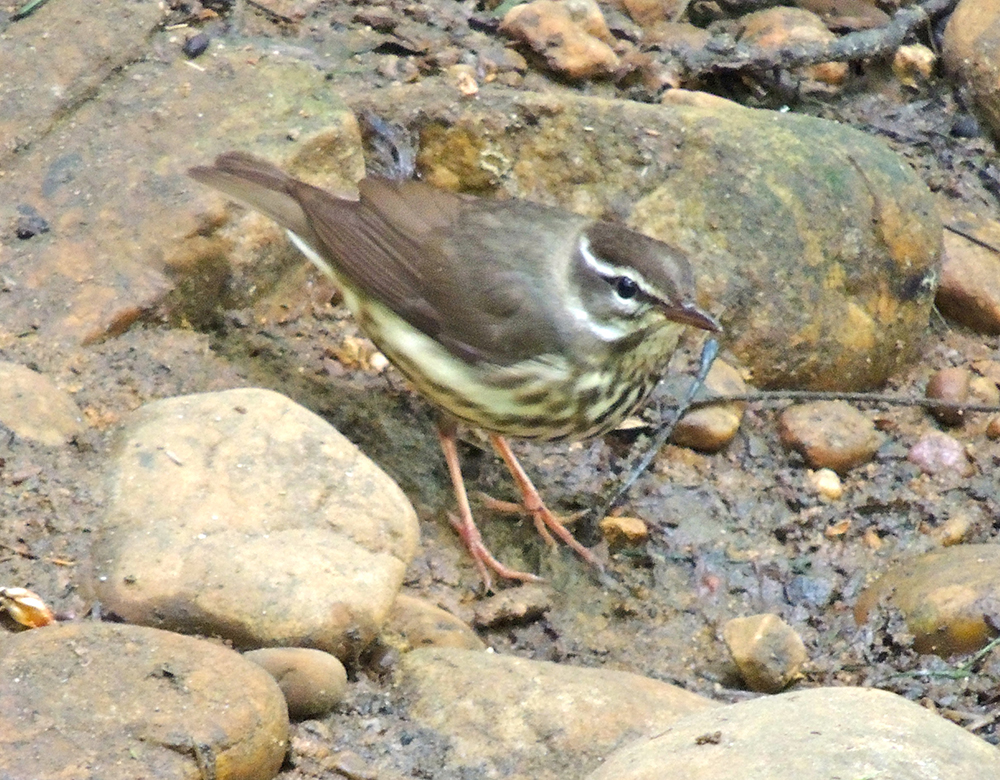
Louisiana Waterthrushes have a long white eyebrow that often curls up at the end. The legs are bubblegum pink.
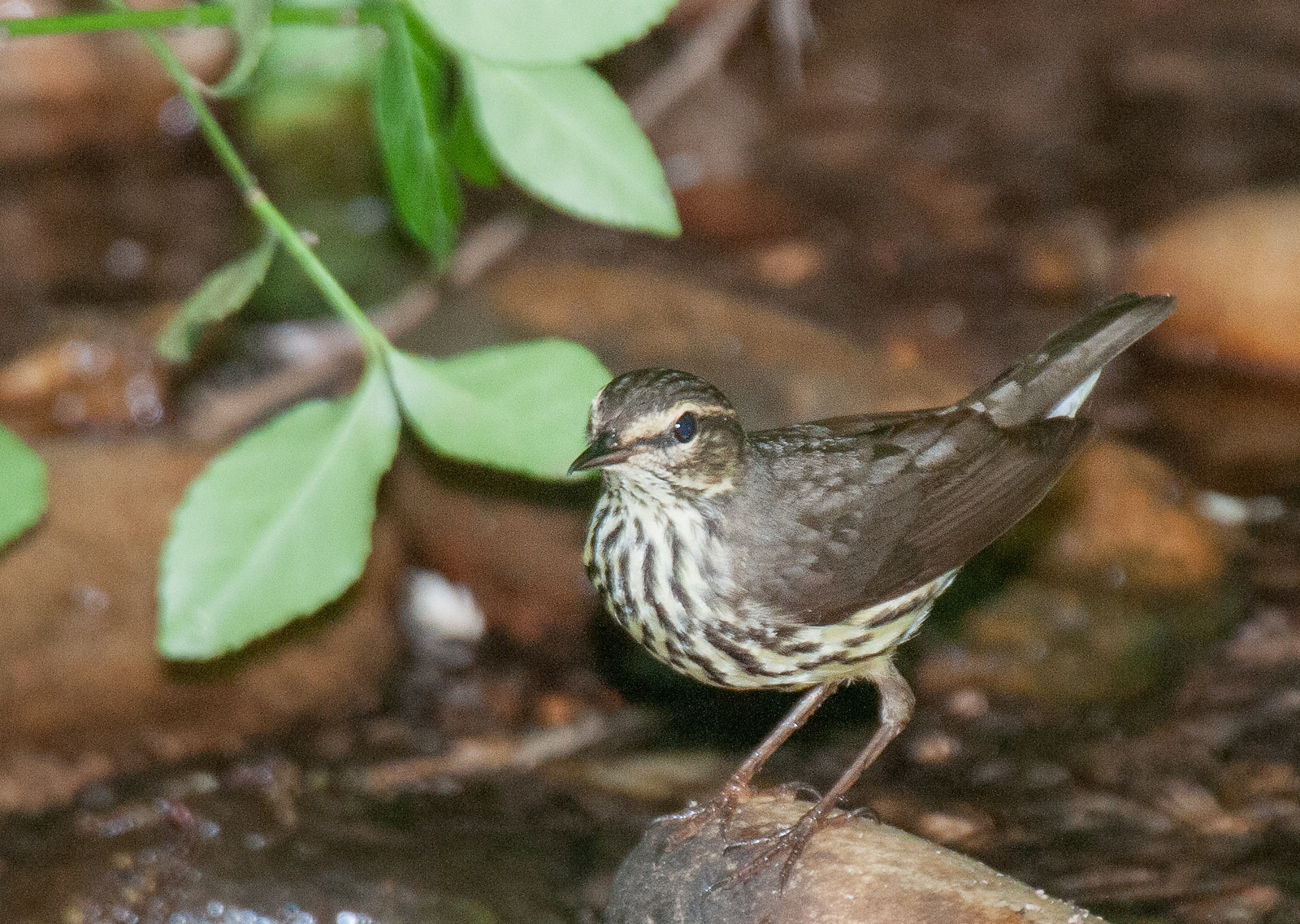
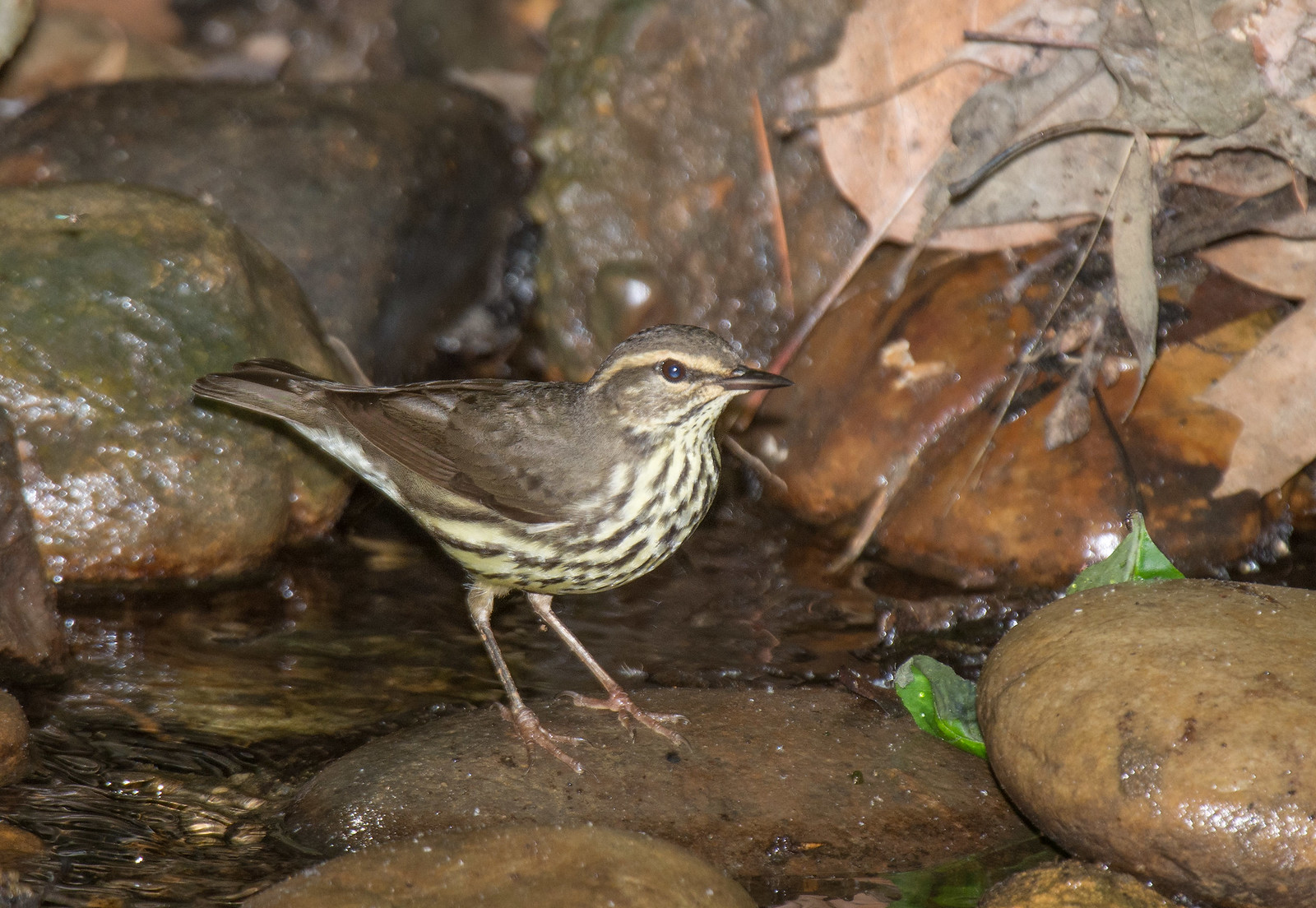
The Northern Waterthrush has denser streaking below, but that can be difficult to determine if you do not see the two species together. The supercilium is long, but it does not curve up at the end. The legs are pink, but not as bright a shade of pink as the Louisiana's. Leg color can be confusing, because if a Northern has been walking in the water, its wet legs can appear to be a brighter pink than its dry legs. Northern Waterthrushes often appear to be entirely buffy below, while the Louisiana is buffy only on the flanks. Some Northern Waterthrushes are white rather than buffy below and can have a supercilium that is either buffy or white. If the waterthrush is entirely buffy below, it is a Northern. If it is mostly white below, you should look at other fieldmarks.
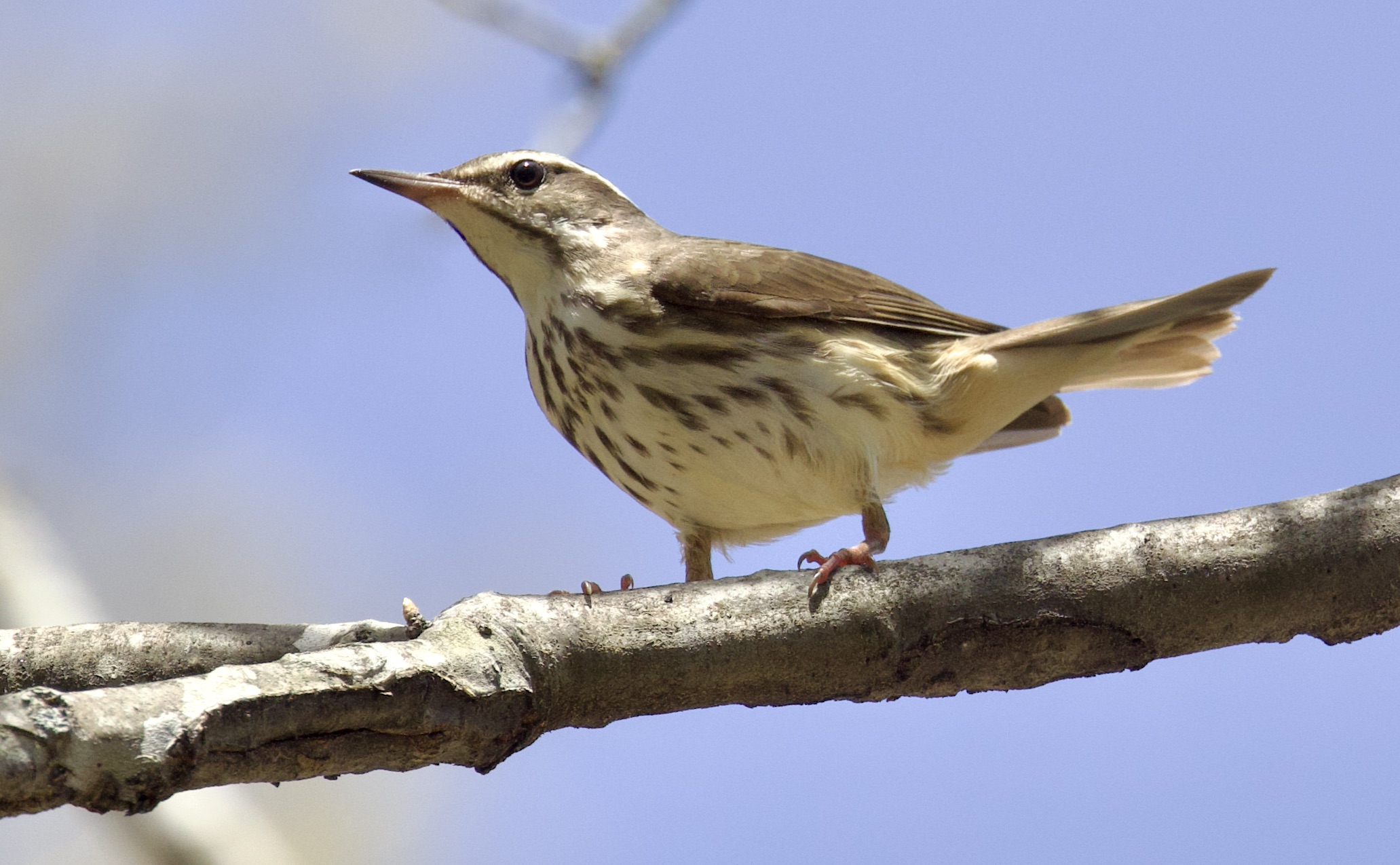
The throat can be an important fieldmark. The Louisiana usually has an unmarked throat.
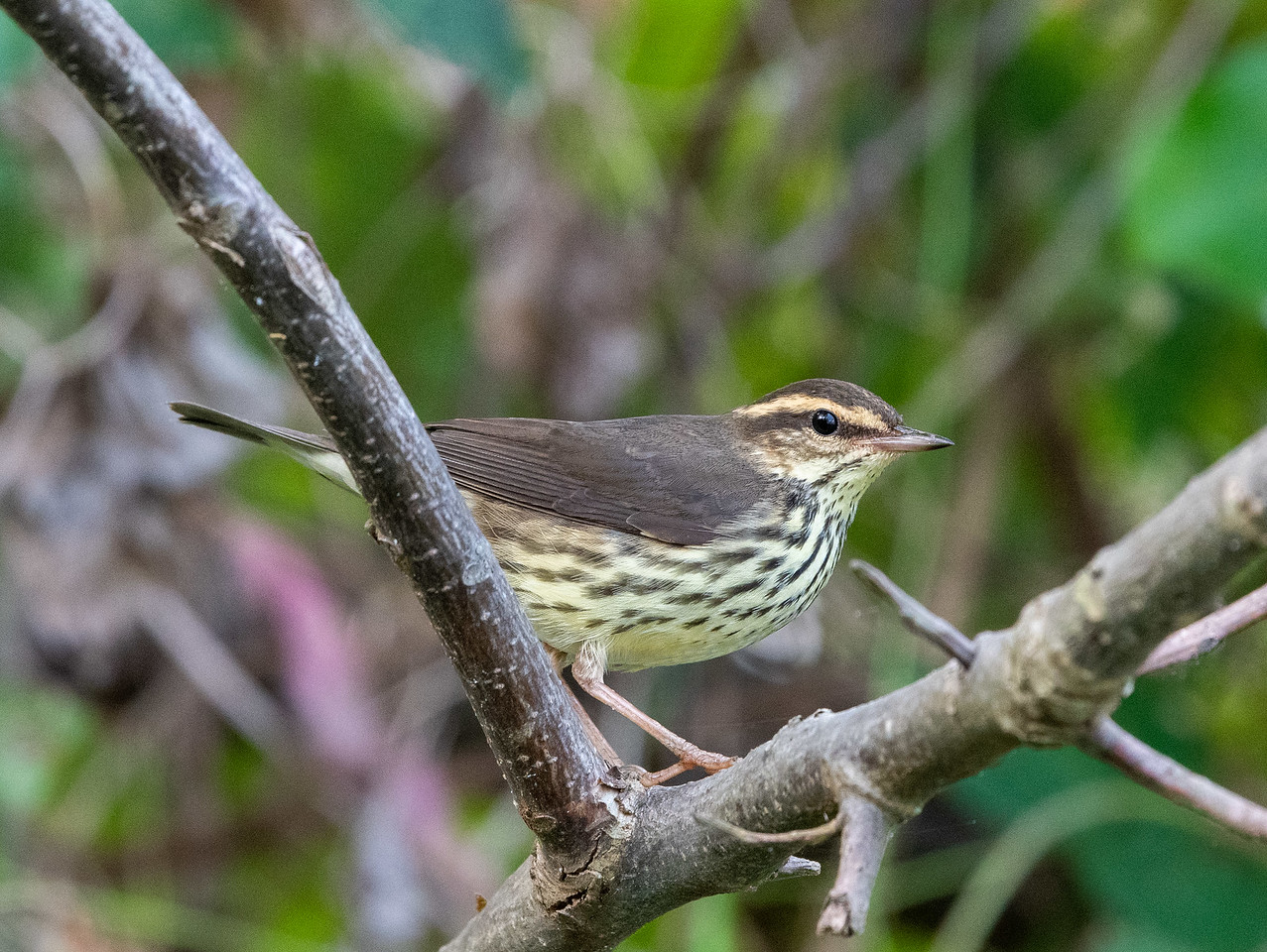

The Northern tends to have streaks on the throat. Sometimes the streaks are faint and can be difficult to see.
The Northern tends to bob its tail up and down quickly. The Louisiana tends to bob its tail more slowly and with a slight side-to-side motion that can be difficult to see in the field. The differences in tail bobbing of the two species are subtle.
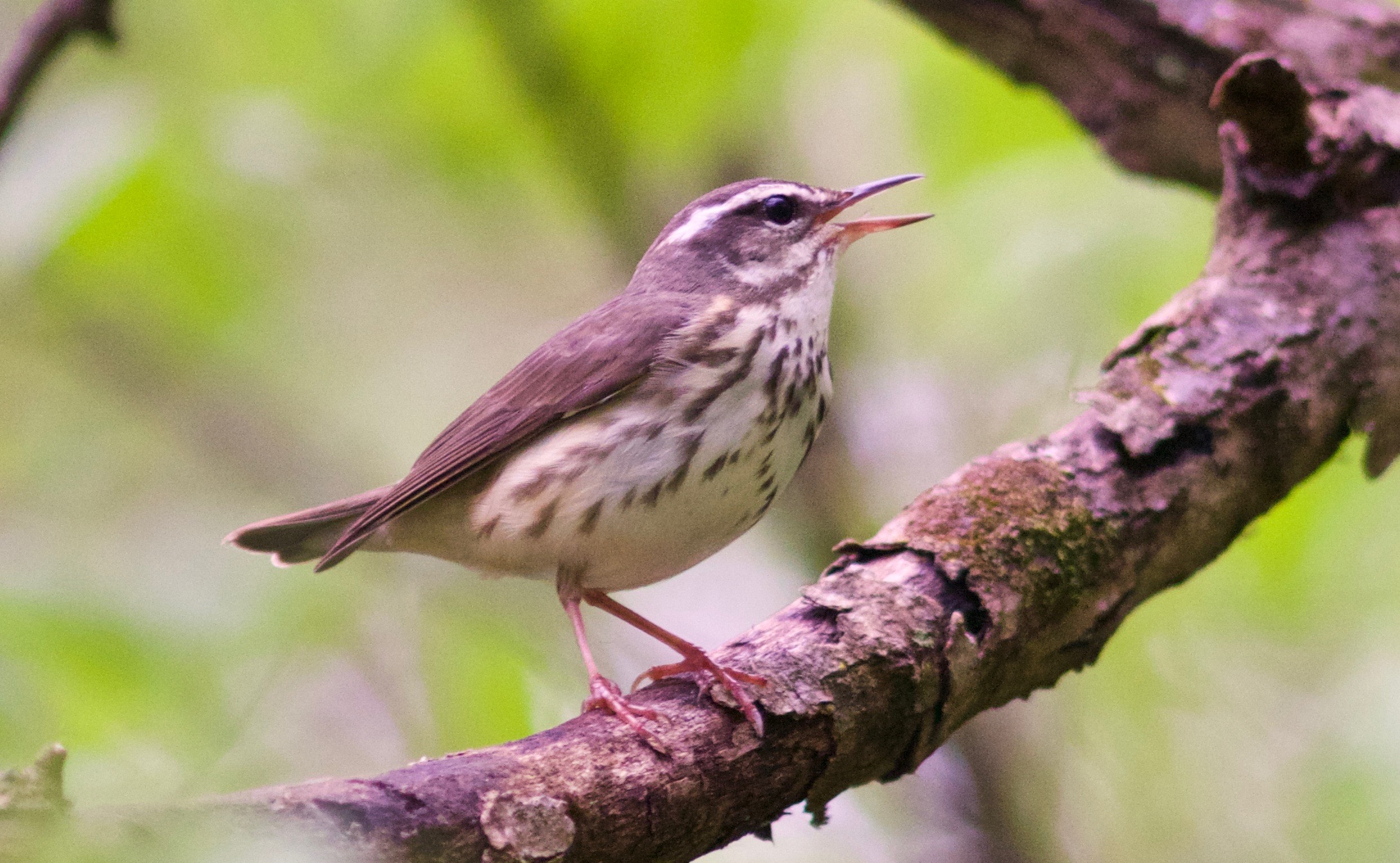
The waterthrushes can be told apart easily when they sing. The Louisiana sings a series of long slurred introductory notes which descend into a jumble of quieter notes. The Northern sings a series of loud and evenly-paced notes which end with an emphatic CHEW-CHEW-CHEW. Both species have a loud chink call note, and it takes practice to tell the call notes apart. In many instances, identifying which waterthrush is making the call note is less important than identifying that the call note is being made by a waterthrush rather than some other type of bird. Both waterthrushes will sometimes sing from bushes or low branches in trees. They usually stand still and move their head while singing, so they can be difficult to locate.
Hear the vocalizations of the Louisiana Waterthrush.
Hear the song of the Northern Waterthrush.
The waterthrushes used to be in the same genus as the Ovenbird, and they were all listed near the end of the taxonomic list of warblers. The taxonomic list is based on the order in which birds are thought to have evolved, with the earliest evolved coming first. The ordering is done both with families of birds and within each bird family. The warbler family is thought to have evolved much later than the ostriches and waterfowl, but earlier than the sparrows and finches. Within the warbler family, the Ovenbird is now thought to have evolved earliest, followed by the Worm-eating Warbler and the two waterthrushes. The latest evolved warblers who regularly visit Monticello are the Wilson's and Canada.
Common Names: Louisiana from the former Louisiana Territory, even though not many Louisiana Waterthrushes are found there. Northern from their northerly breeding range. Waterthrush from their preference for habitats near water and because they look like thrushes.
Genus Name: Parkesia from the American ornithologist Kenneth Carroll Parkes.
Species Names: Motacilla means wagtail, for the way they bob when feeding. Novaboracensis means from New York, where the first specimen was found.
Louisiana Waterthrush video footage
Northern Waterthrush video footage
Return to the Index